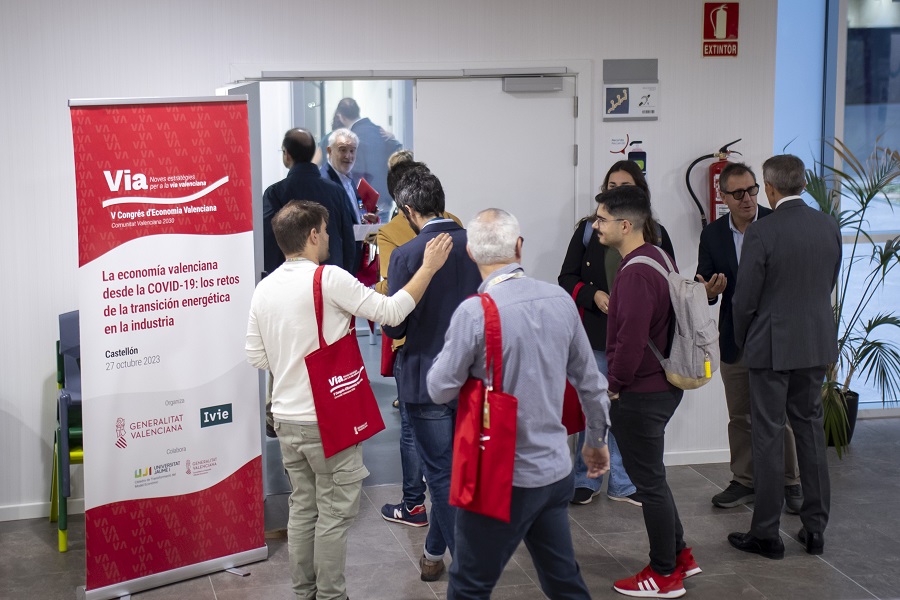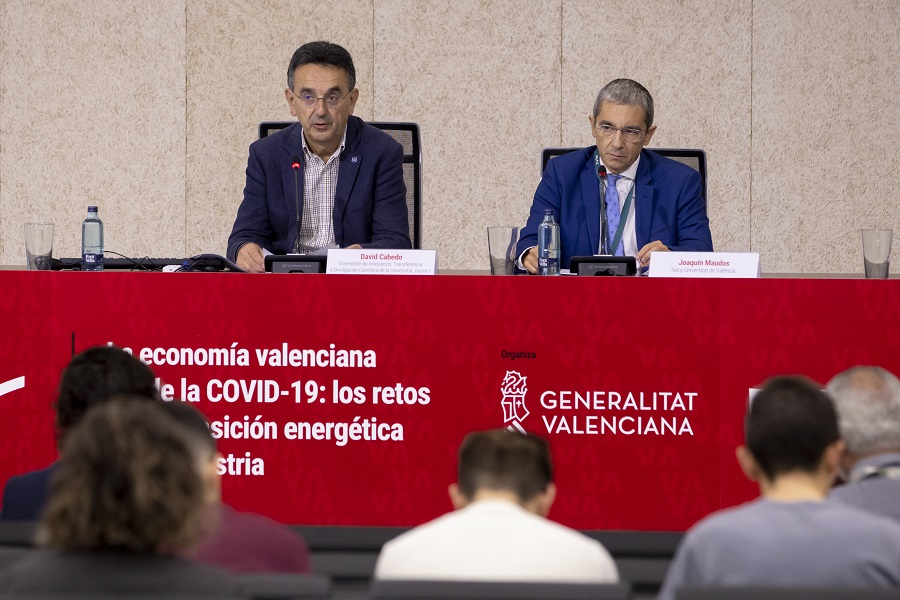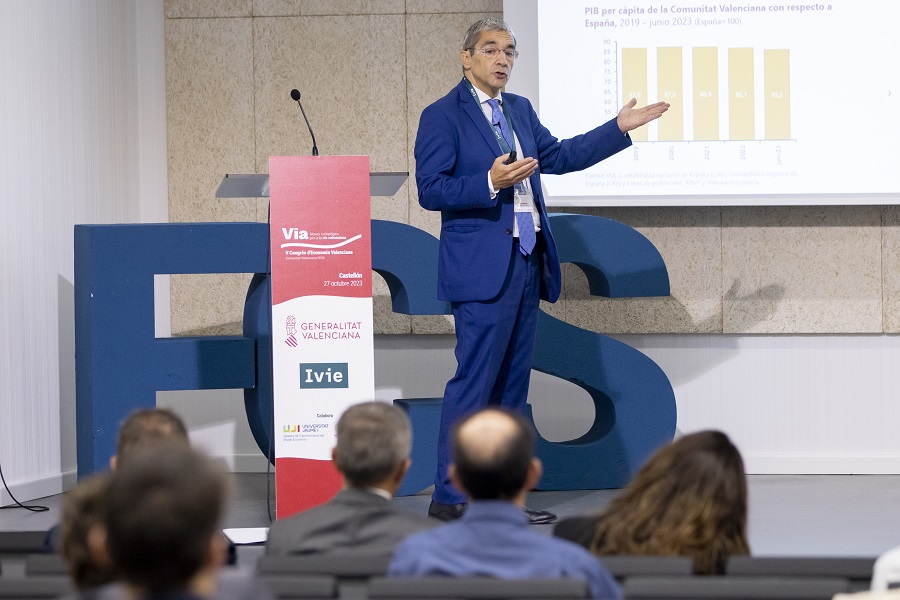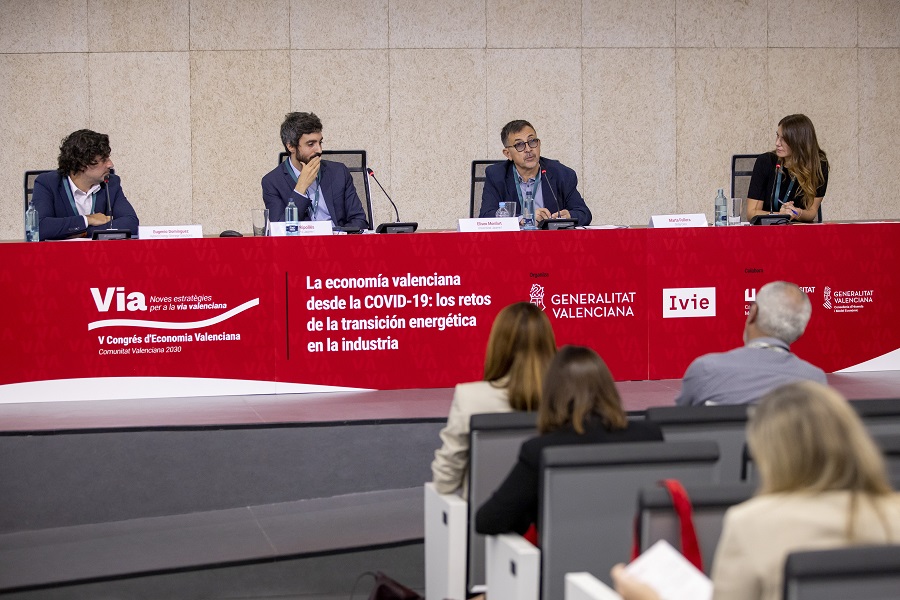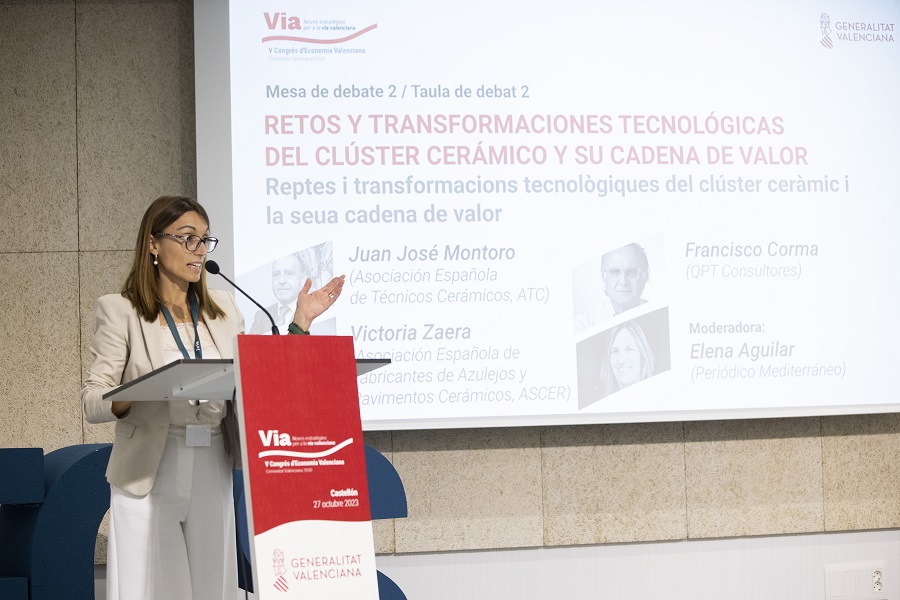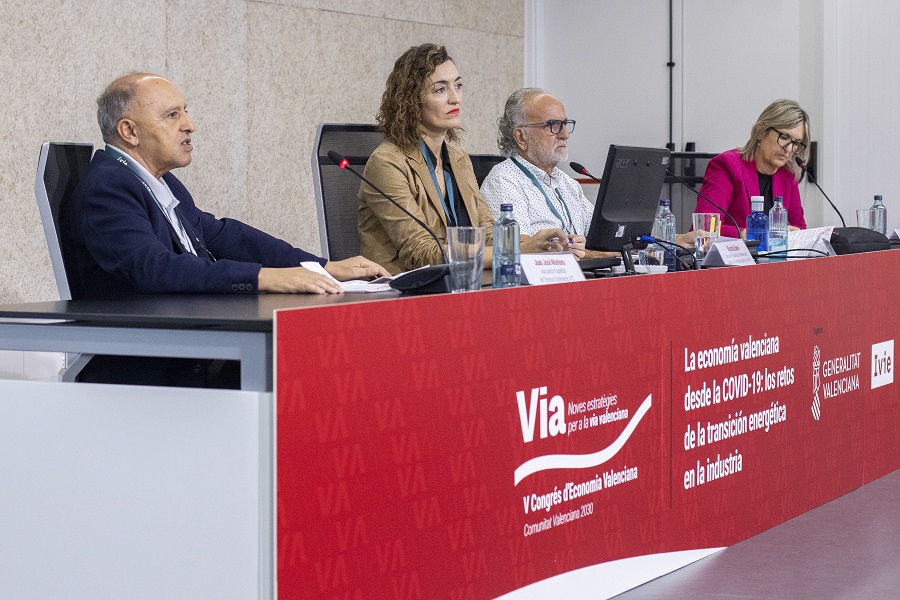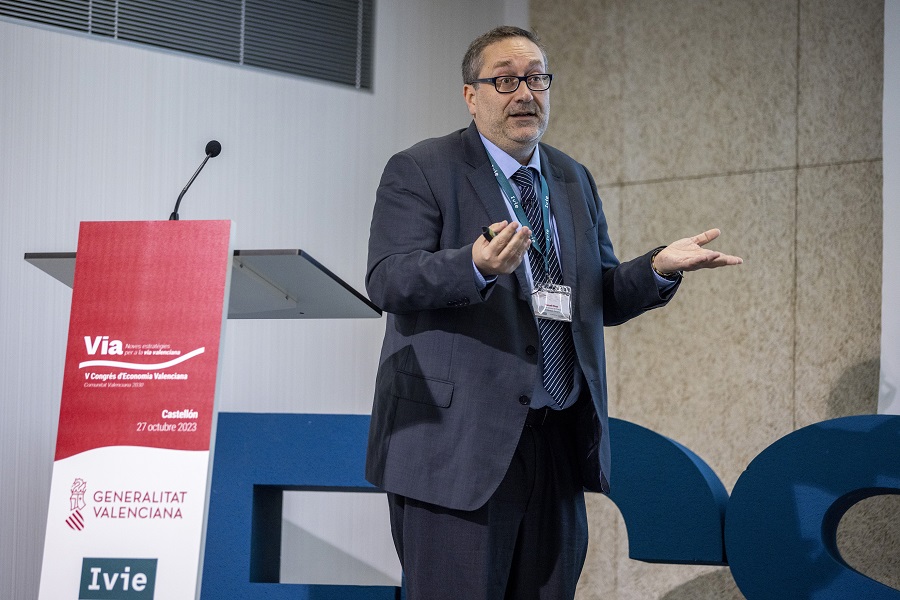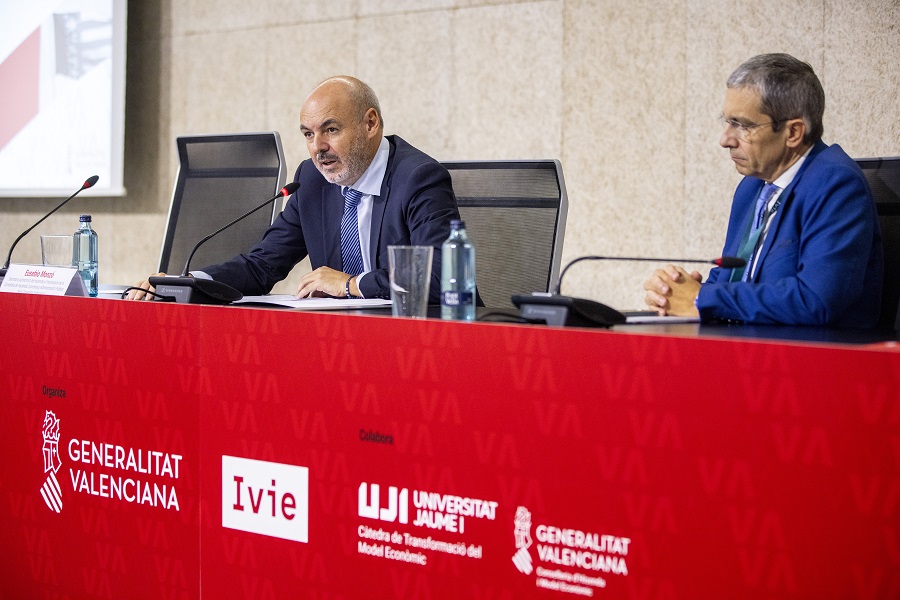Esta web utiliza cookies para que podamos ofrecerte la mejor experiencia de usuario posible. La información de las cookies se almacena en tu navegador y realiza funciones tales como reconocerte cuando vuelves a nuestra web o ayudar a nuestro equipo a comprender qué secciones de la web encuentras más interesantes y útiles.
News
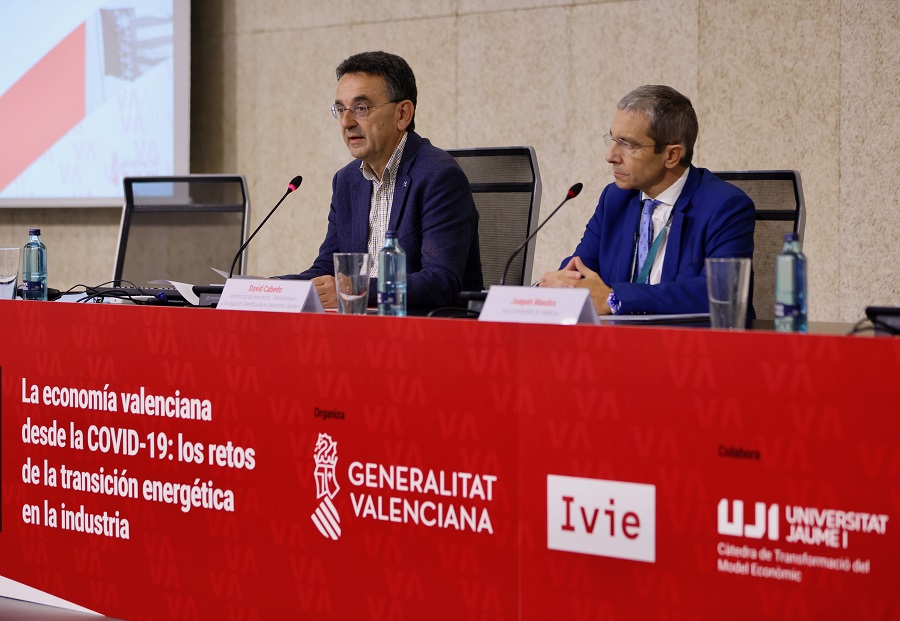
Per capita income in the Valencian Community started to deviate from the national average following COVID-19 and is currently about 15% below it
The 5th Valencian Economic Congress came to an end in Castellon with a discussion about the challenges the energy transition is posing to many industries, especially the ceramics industry
The GDP per capita level of the Valencian Community is currently 14.8% below the national average, compared to 13% before COVID-19, with an increasing gap of about two percentage points since 2019. Although the region recovered its pre-pandemic real GDP level in the first quarter of 2023, the high rate of population growth explains the 4.6% decrease in income per capita between 2019 and June 2023, a larger decline than the 2.5% recorded for the entire country.
This is one of the main conclusions of the report La evolución de la economía valenciana desde el estallido de la crisis de la COVID-19, presented by the Ivie’s Deputy Director, Joaquín Maudos, at the concluding session of the 5th Valencian Economic Congress. The conference, organized by the Valencian Government and the Ivie, in collaboration with the Chair in Transformation of the Economic Model of the Jaume I University, was held in Castellón (Spain) at the Conference Hall of the Faculty of Health Sciences of the University Jaume I. Eusebio Monzó, Regional Secretary of Finance and Economy, was in charge of closing the conference.
The opening speech was given by David Cabedo, Vice Chancellor of Innovation, Transfer & Scientific Dissemination of the University Jaume I. Afterwards, Joaquín Maudos provided a summary in figures of the the evolution of the Valencian economy after the COVID-19 pandemic. In addition to GDP, he examined other elements, such as, employment, business dynamism, exports, foreign investment and competitiveness.
Between 2020 and 2023, the Valencian labor market has proven to be more dynamic than the rest of Spain, according to the Spanish Labour Force Survey (EPA), which shows that the number of employed people in Valencia increased by 6.4% between the last quarter of 2019 and the second quarter of 2023. This growth is nearly one percentage point higher than the national average of 5.5%.
The results also emphasize the creation of businesses, pointing out that in 2022 there were 1.2% more companies registered in the Valencian Community than there were at the beginning of 2020, an evolution that also exceeds the 0.8% growth of the Spanish business fabric.
Regarding the foreign sector, the number of Valencian companies that export increased by 12.7% between 2019 and 2022 (a figure that contrasts with the 9.45% drop in Spain). However, Valencian exports have grown with less intensity (36.9% vs. 26.1% since 2019), resulting in a loss of export share for the region. On the other hand, the Valencian Region excels at attracting foreign direct investment. Thus, it attracted 3,323 million euros in foreign investment between July 2022 and June 2023, which is equivalent to multiplying the 2019 amount by 4.3.
The Ivie document presented at the 5th Valencian Economic Congress highlights the growing disparity in per capita income between the Valencian Region from the national average as a concerning issue, which places it in 12th position in the regional ranking. Similarly, the gap that separates the Valencian region from the national average in productivity is increasing. If productivity per hour worked was 6.9% lower in the Valencian Region than in Spain in 2019, by June 2023 it was already 10.1% lower.
Finally, Joaquín Maudos recalled the issue of the region’s high public debt and deficit. According to data available until June of 2023, Valencia’s GDP deficit was 1.39%, which was higher than the average of 0.85% for all of Spain. In terms of public debt as a percentage of GDP, since the maximum reached in March 2021, it has been decreasing in the Valencian Community and Spain as GDP increases. Nevertheless, as of June 2023, Valencia has the highest debt-to-GDP ratio among the Spanish regions (43.5%9, 1.6 percentage points (pp) higher than at the end of 2019, in contrast to Spain’s 0.5 pp decline.
After this presentation of results by Joaquín Maudos which offered an overview of the economic state of the region, the session continued with a round table discussion on energy transition and sustainability in industry, led by Eliseo Monfort, Professor of Chemical Engineering and co-director of the BP Chair of Industrial Environment at the University Jaume I ; Eugenio Domínguez, CEO of Hybrid Energy Storage Solutions; and Jordi Ripollés, Professor and Researcher at the Institute of International Economics of the University Jaume I .
Following the first part was another round table discussion on the challenges and technological changes of the ceramic industry and its value chain. The following experts took part: Juan José Montoro, President of the Spanish Association of Ceramic Technicians (ATC); Victoria Zaera, Head of the Environmental and Sustainability Area of the Spanish Ceramic Tile Manufacturers Association (ASCER); and Francisco Corma, Manager of QPT Consultants.
This was followed by the conference “Crisis and energy transition in the EU: Impacts on the 2030 horizon” by Manuel Rivas, Head of Market Analysis Team, Directorate General for Energy at the European Commission.
And lastly, the Regional Secretary of Finance and Economy, Eusebio Monzó, closed off the last session of the 5th Valencian Economic Congress. The last day’s discussions examined the changes to the Valencian economy since the pandemic and potential future challenges, whereas the previous two sessions, held last year in Alicante and Valencia, covered the evolution of the economy since the Statute of Autonomy.
Within these challenges, the conference put special attention to energy transition, as it poses a significant threat to the Spanish economy, and particularly to the ceramic cluster, whose energy consumption is particularly high. In a world increasingly focused on sustainability, companies are under pressure to reduce their carbon footprint and employ renewable energy sources. This suggests significant financial outlays, but also opportunities for innovation and competitiveness, as well as a more environmentally friendly reputation that may draw in customers and investors.


